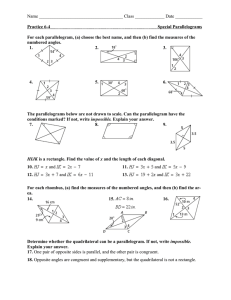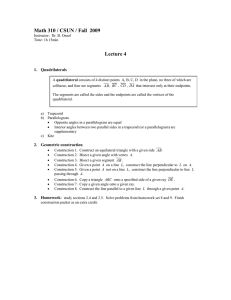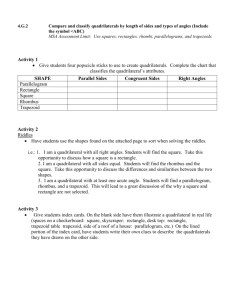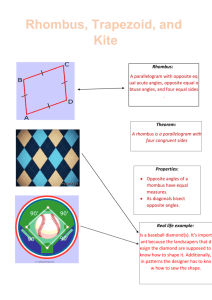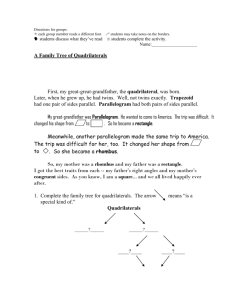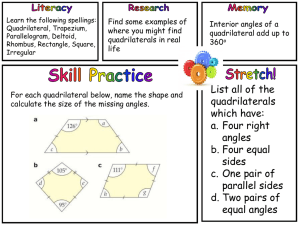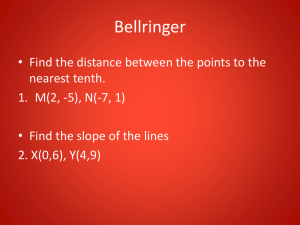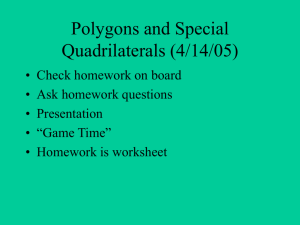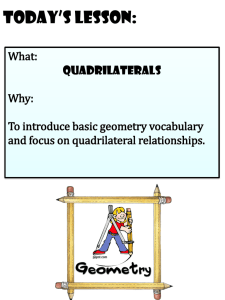Geometry Name ___________________________ Test Chapter 6
advertisement
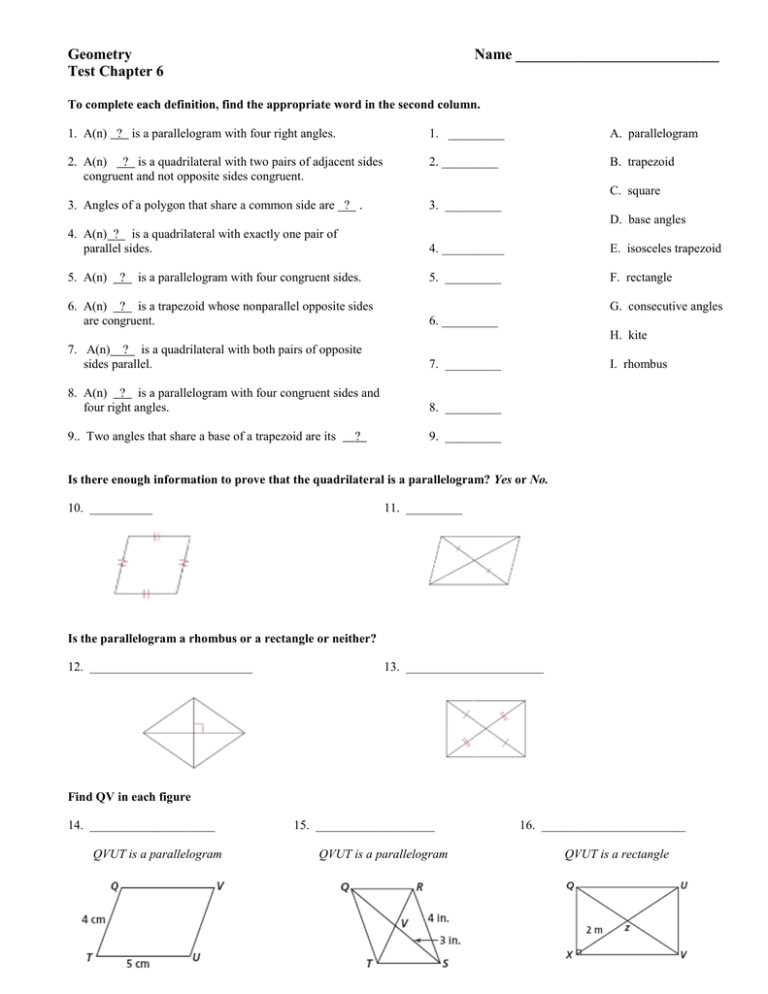
Geometry Test Chapter 6 Name ___________________________ To complete each definition, find the appropriate word in the second column. 1. A(n) ? is a parallelogram with four right angles. 1. _________ A. parallelogram 2. A(n) ? is a quadrilateral with two pairs of adjacent sides congruent and not opposite sides congruent. 2. _________ B. trapezoid 3. Angles of a polygon that share a common side are ? . 3. _________ C. square D. base angles 4. A(n) ? is a quadrilateral with exactly one pair of parallel sides. 4. __________ E. isosceles trapezoid 5. A(n) 5. _________ F. rectangle ? is a parallelogram with four congruent sides. 6. A(n) ? is a trapezoid whose nonparallel opposite sides are congruent. G. consecutive angles 6. _________ H. kite 7. A(n) ? is a quadrilateral with both pairs of opposite sides parallel. 7. _________ 8. A(n) ? is a parallelogram with four congruent sides and four right angles. 8. _________ 9.. Two angles that share a base of a trapezoid are its 9. _________ ? I. rhombus Is there enough information to prove that the quadrilateral is a parallelogram? Yes or No. 10. __________ 11. _________ Is the parallelogram a rhombus or a rectangle or neither? 12. __________________________ 13. ______________________ Find QV in each figure 14. ____________________ QVUT is a parallelogram 15. ___________________ QVUT is a parallelogram 16. _______________________ QVUT is a rectangle Find the values of the variables for each figure. 17. x = ________ 18. x = _________ y = ____________ 19. x = _________ 20. x = ____________ AC = 7x – 15, BD = 4x + 15 21. x = _________ y = __________ Find the measures of 23 22. x = ________ y = __________ 1 and 2. 1 = _______ 2 = ________ 24. 1 = _______ 2 = ________ 25. 1 = _______ 2 = ________ Find the measures of the numbered angles in each rhombus. 26. 1 = _______ 2 = ________ 27. 1 = _______ 2 = ________ Graph quadrilateral ABCD. Then prove why it is that precise name. 29. Kite A(0, 6), B(3, 3), C(0, -5), D(-3, 3) Proof: Length: __________ = ___________ __________ = ___________ 30. Trapezoid A(-3, 5), B(1, 7), C(3, 2), D(-7, -3) Proof: 28. 1 = _______ 2 = ________
